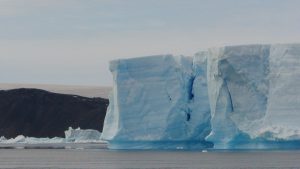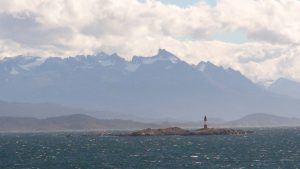63d 36m 25.6s S, 56d 45m 08.5s W (WP092)
At this point in the journey, it was clear a course change last night prevented us from reaching Elephant Island. I was disappointed. With the change in weather, it was hoped we were going to reach Devil’s Island in the Weddell Sea, but the pack ice had come in and prevented passage. So in consolation, we did a tour of the local bay where I got a glimpse of “sea ice” which forms only when the salt water freezes, a much lower point than the typical icebergs, which are frozen fresh water from glaciers on the continent. We had some neat “tabular icebergs” (100s of meters in length) that were on their own journey to the sea. It was fun to see a leopard seal and crab-eater seals sitting atop these tabular icebergs, another part of their lifecycle when the ice is their home.
After a tour, the Polar Pioneer tried to sail between Tabarin and Anderson Island but had trouble with the ice. Tried a third time to get to Paulet Island via the Erebus and Terror Gulf, but got turned back. A final course correction to bring us east was made by dinner time and I had to say goodbye to the Weddell Sea. Another thing I had just gotten a glimpse of, but was held back.
(time stamps shown for local time UTC-3hrs)






